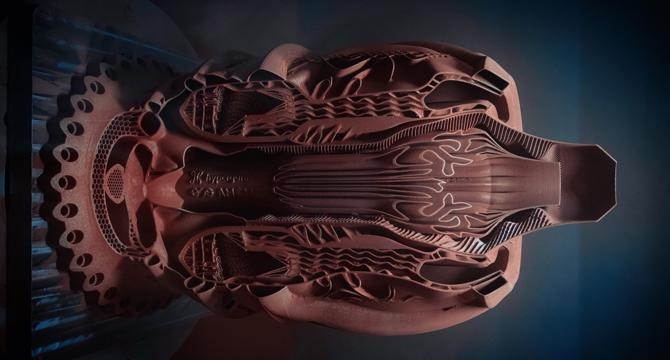
A team of researchers has developed a 3D printed aerospike engine that was designed using artificial intelligence (AI) and could potentially revolutionize the aerospace industry. The engine is the most complicated 3D print yet, and was created using a combination of generative algorithms and 3D printed nozzles.
The team, which included engineers from the University of Texas at Arlington and NASA, used generative AI computer-aided design (CAD) to create the complex design for the aerospike engine. The generative algorithms were programmed to optimize the engine’s performance and efficiency, resulting in a highly complex and intricate design that could not have been achieved through traditional design methods.
The aerospike engine was then 3D printed using additive manufacturing, which allowed the team to create the engine with minimal waste and reduced production time. The use of 3D printing also allowed for greater design flexibility and customization, as the team was able to adjust the engine’s design in real-time based on performance testing.
The development of the AI-designed 3D printed aerospike engine could have significant implications for the aerospace industry. The engine’s efficient design and production process could potentially lead to faster, cheaper, and more reliable space travel. In addition, the use of generative AI CAD and additive manufacturing could pave the way for future advancements in aerospace technology.
However, before the engine can be used in space travel, it will need to receive clearance from aviation regulators. The team behind the project has stated that they will work closely with regulators to ensure that the engine meets all safety and performance standards.
Overall, the development of the AI-designed 3D printed aerospike engine represents a major step forward for the aerospace industry. The combination of generative algorithms and additive manufacturing has the potential to unlock new levels of efficiency and innovation, and could lead to significant advancements in space travel and exploration in the coming years.

